Here are some handy guideline and tips on how to freeze vegetables and fruits properly. Flash-frozen food loses fewer vitamins and minerals in processing than any other of the preserved foods. The faster it's frozen, the more nutrients it retains. Freezing produce is also the quickest, easiest, and safest procedure of all the techniques for preserving.
Vegetables are simply blanched, cooled, packaged, and frozen. Fruit is cut, dipped in an ascorbic acid bath, and frozen, or cooked in a syrup and frozen, or cooked in a syrup and frozen. Tomato sauces can be made when tomatoes are falling off the vines, and frozen for a ready-made midwinter spaghetti sauce.
Lasagna can be made in double batches and frozen for a busy day. By placing food into temperatures of around 0º, as is found in most freezers, the activity of microorganisms is halted, and the enzyme process is significantly slowed.
Secrets for Success
Freezer burn—the common term for frozen food that has shriveled up and tastes like cardboard—happens because the food has lost its moisture and become dehydrated. You therefore need to package the food you are going to place in the freezer in containers that hold in all the moisture. Any food in a package that is not sealed properly—aluminum foil with a tear, a freezer bag that isn’t closed—will get freezer burn, as will food that is packaged in paper or plastic that does not provide a vapor barrier.
Another reason for packaging frozen food in airtight containers is that exposure to oxygen will hasten spoilage. Plastic freezer bags, rigid plastic freezer containers, and glass canning jars all provide a vapor barrier and are airtight.
Freezing food fast
Freezing food fast is another rule of thumb for successful freezing. Enzymes and microorganisms will continue doing their work until the food is placed in the deep cold of a freezer. Plan ahead so that you don’t run out of time to completely process the food, leaving the food to sit overnight, even in the refrigerator.
You also need to make sure the freezer maintains its 0ºF temperature for a quick freeze. If you add too much food to the freezer at once it will be hard to maintain 0ºF. The general rule of thumb is to not add food to a freezer faster than one pound to a cubic foot of freezer space a day.
Most fruits and vegetables have been in liquid before being frozen. If you pack them into a freezer container and freeze them saturated with moisture, they will all freeze together into a lump. This would make it difficult, for example, to separate broccoli flowerets later if you just wanted to take out a few broccoli flowerets onto a cookie sheet after blanching and cooling, laying them out so the pieces don’t touch one another, and then place them into the freezer for three to four hours. Immediately package the broccoli (it won’t stick together), and replace in the freezer.
Equipment
Freezer
If you plan to freeze a substantial amount of food, there is no getting around the need for a large-capacity freezer. This one requirement can be an expensive one, but not as expensive as you might think.
The advantage of buying a freezer new is that you'll benefit from advances in energy efficiency. Large-capacity freezers are available used; older freezers will cost more to run, but you'll pay less up front.
Freezer Packaging
In choosing freezer packaging, one faces a dilemma about plastic. Other than glass canning jars, the only reliable and easily accessible freezer packaging is made from heavy plastic. It is even recommended to encase heavy-duty aluminum foil in plastic to help seal it, because the foil rips so easily. But, as noted, using plastics is undesirable not only because their use depletes virgin resources, but plastic can also migrate into warm and fatty foods with potential health consequences.
Given the dearth of options, and with a few words of caution, the three packaging options I suggest for harvesting fruits and vegetables are reusable plastic quart freezer containers with snugly fitting lids making an airtight sea, glass canning jars and tops, and plastic freezer bags.
The plastic quart freezer containers are made of No. 2 HDPE, and once the containers have finally reached the end of their functional life, in most communities you will be able to recycle them. Glass mason jars come in pint and quart sizes and are available in most hardware stores. They are ideal for homemade sauces such as apple and tomato.
Freezer bags come in a variety of sizes, but make sure the labels clearly state that the bags are “freezer” bags, otherwise they may not work as a vapor barrier. Freezer bags are very sturdy, and should be able to be washed and reused a great number of times.
BPA-Free is Best When it Comes to Plastic Containers
When plastic containers are new, make sure to wash them thoroughly. Your best bet is to used BPA-free containers in the first place.
If you want to freeze casseroles and other food that won’t fit in the containers mentioned above (note that freezer bags are available in gallon sizes), use a double layer of heavy-duty aluminum foil. (Make sure that the shiny side is facing the food, as the dull side is coated with an oil.) Seal the package shut by folding the foil and then taping over the fold with tape. Make sure to place food wrapped in foil in a place where it is unlikely to get punctured.
Label all containers with a grease pencil. Try to avoid indelible ink markers; their solvents linger in the environment and can be toxic, and something written in indelible ink may no longer be appropriate when you want to reuse the container.
Foods Good for Freezing
The sky is virtually the limit when it comes to foods that are good candidates for freezing. In fact, the only limit really is your imagination. While it is not quite true that absolutely everything freezes well (lettuce is out, cucumbers need to be made into a soup, and beans can get mealy), you may be surprised at the variety of foods suitable. Buy food when it is cheap and locally produced, and freeze it for when it is neither.
Freezing Procedure
As soon as you can after the produce enters your kitchen, prepare it for freezing. Wash, peel, slice, core, and cut away bad spots.
Freezing Vegetables
If you have a double sink and one side has a plug, scrub one sink until it is scrupulously clean and rise thoroughly. If you don’t have a double sink, use a large pan.
While the vegetables are blanching (see directions earlier in this chapter), fill the cleaned sink or pan with cold water and ice from two or three ice trays.
Once the vegetables have been blanched the correct amount of time, plunge them, basket and all, into the sink of ice cold water.
Cool the vegetables thoroughly in the ice water, and then with a slotted spoon remove them and place them on a cookie sheet. (Make sure there is only one layer of vegetables on the sheet, and that the pieces aren’t touching each other.) Place immediately in the freezer for three to four hours. Remove and drop into freezer bags or freezer containers, label, and return to the freezer.
Fruits and Vegetables That are Good for Freezing
Fruit
Apples, apricots, avocados, berries, melons, cherries, coconut, currants, figs, grapefruit and oranges, grapes, peaches, nectarines, pears, persimmons, pineapple, plums, prunes, rhubarb, watermelon.
Vegetables
Artichokes, asparagus, beans, beets, broccoli, brussels sprouts, cabbage, carrots, cauliflower, celery, collards, corn eggplant, greens, herbs, kohlrabi, leek, onions, okra, parsnips, peas, peppers, potatoes, pumpkin, rutabagas, soybeans, squash (summer and winter), sweet potatoes, tomatoes, turnips.
Freezing Fruit in Syrup
The way I freeze pears—freezing fruit in a syrup—is typical of how fruit is usually prepared for freezing. A friend has a few pear trees and gives me bagfuls of pears in October.
I line them up in windowsills until they are perfectly ripe, and then I take a few evenings to freeze them, by cutting them into slices, coring them, and cooking with water, honey to taste, and freshly grated ginger root. I cool the mixture, package it in quart freezer containers (meal size), and freeze them. I could have added a bit of lemon juice to make sure the pears didn’t brown, but I find I don’t need to.
Freezing fruit in a sweetened syrup, even if natural sweeteners are used, turns the fruit into a dessert. If you want to avoid the addition of sweeteners, simply freeze the fruit with a compatible fruit juice instead.
Syrups
The general formula for light syrups is:
Light Syrup
- ½ cup agave nectar to 4 cups water
- 1 cup sugar or Sucanat to 4 cups water
- ½ cup maple syrup to 4 cups wter
Fruit Juice Syrup
Add fruit and enough fruit juice to cover to a pan. Simmer the fruit until cooked; cool, freeze immediately. (Or, don’t cook the juice and fruit; just pack raw.)
Addition of Ascorbic Acid or Lemon Juice: The general formula for the addition of ascorbic acid or lemon juice to syrup is ¼ teaspoon ascorbic acid, or 2 tablespoons lemon juice per cup of liquid.
Other Ideas for Freezing Foods
The freezer is the perfect aid for practicing thrift. Not only can one buy food when it I cheap and freeze it, but you can also significantly reduce the amount of food you waste. For example, if bananas are beginning to get overripe and you don’t have time to make banana bread, simply mash up the bananas, add a little lemon juice, and freeze for a time when you can bake.
Freezing food is also an incredible asset for establishing a healthful diet in very busy lives. Food can be frozen in advance for days when you know you won’t have time to cook, and when you have time and desire to cook, you can make extra of everything for freezing. Here are some other ideas:
- If you enjoy making soup in the winter, keep a large freezer bag of loose vegetables stored in the freezer. Every time you are chopping vegetables, cut a little extra and throw into this all-purpose “soup bag.”
- If you like pesto, make a number of batches at once. Spoon it into meal-size yogurt containers, and freeze. (Omit the pine nuts when you do this, and add them just before serving.)
- If you don’t use up ginger root very quickly, and tend to throw a lot away because it goes bad, freeze some root in a small freezer bag, take it out and grate off only as much as you need, and replace it in the freezer.
- Make herb “cubes” by cutting up some fresh herbs, placing a teaspoon or so of them in an ice cube tray, covering the herbs with water, and freezing. (You can do this with mint for “mint cubes” for your tea in the winter.)
- To avoid having all of your pans end up in the freezer, buy inexpensive, reusable aluminum pans, available in most supermarkets. Make double batches of casseroles, lasagnas, and favorite dishes, transfer them to the aluminum pans, and freeze.
Final Steps
- Never pack a canning jar, freezer container, or freezer bag completely full. Water expands when it freezes, and the bag would explode.
- Make sure that containers are sealed completely before freezing! This can make the difference between delicious and tasteless food.
- Label and date all food that is put in the freezer.
- As a general guideline, don’t refreeze food that has been thawed. Refrozen food loses its flavor, and the food may have become slightly spoiled when it thawed.
- Most fruits and vegetables last up to ten months in a freezer.
Adapted from The Green Kitchen Handbook.* Annie Berthold Bond is also the author of Home Enlightenment.*
- Explore VegKitchen’s other Green Kitchen articles, as well as the wealth of kitchen tips in the entire Healthy Vegan Kitchen area.
*This post contains affiliate links. If the product is purchased by linking through this review, VegKitchen receives a modest commission, which helps maintain our site and helps it to continue growing!


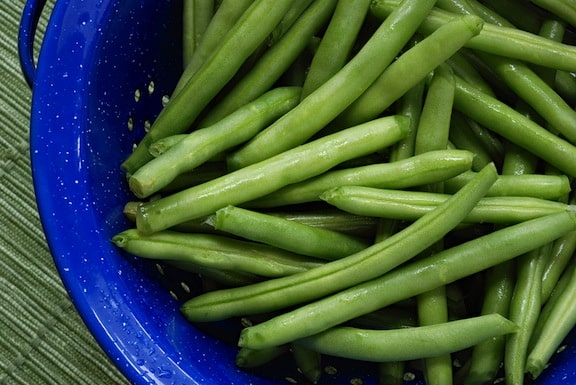
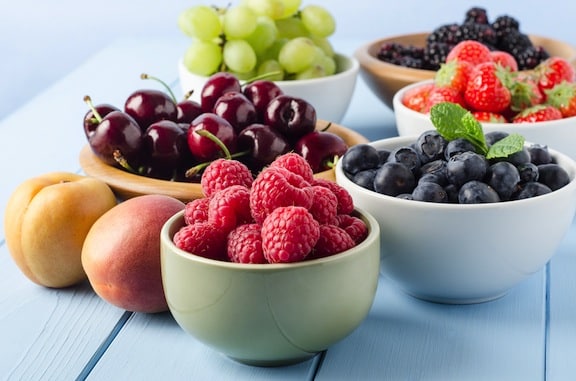
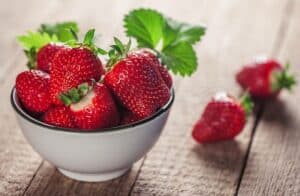
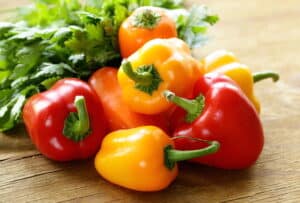
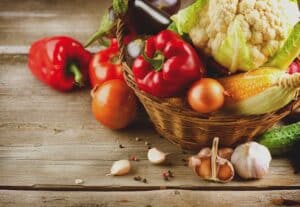
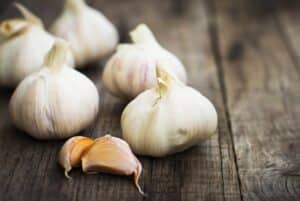
Comments
No Comments